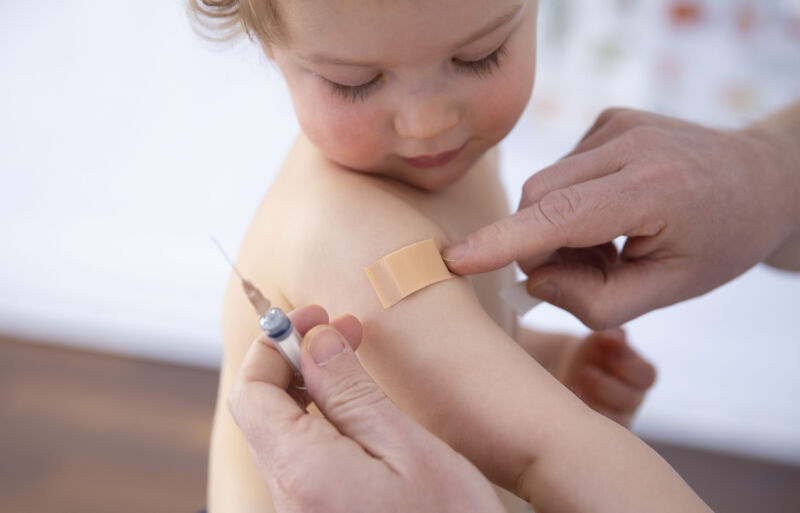US vaccination decline continues: 250,000 kindergarteners vulnerable to measles
Ars Technica » Scientific Method 2023-01-13

Enlarge / A child getting a vaccination on February 19, 2021, in Bonn, Germany. (credit: Getty | Ute Grabowsky)
Routine childhood vaccination coverage continues to slip among US kindergarteners, falling from 95 percent—the target coverage—prior to the pandemic to 94 percent in the 2020–2021 school year and to the new low of 93 percent in the 2021–2022 school year, according to a fresh analysis published Thursday by the Centers for Disease Control and Prevention.
While a two-percent drop "might not sound significant, it means nearly 250,000 kindergarteners are potentially not protected against measles alone," Georgina Peacock, director of the CDC's Immunization Services Division, told reporters in a media briefing Thursday. And, she added, national coverage of MMR vaccination—which protects against measles, mumps, and rubella—is now the lowest it has been in over a decade.
Peacock and other health experts in the briefing attributed the continued decline to a variety of factors. Prime among them are pandemic-related disruptions, such as missed well-child doctor's appointments where routine vaccines are given. There's also data suggesting barriers to access for children living below the poverty line or in rural areas. And vaccine misinformation and disinformation continue to play a role, as it has for many years prior to the pandemic.